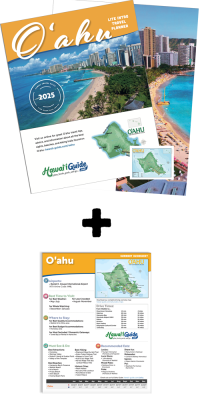Pearl Harbor Avenger
USS Bowfin - WWII Fleet Attack Submarine
If you’re planning a trip to Pearl Harbor, your visit will likely include a stop at the USS Bowfin Submarine Museum & Park, a National Historic Landmark and museum that offers visitors the opportunity to get a glimpse of what it was like to live and work aboard WWII-era submarine.
Brief History of the USS Bowfin
The USS Bowfin was launched on December 7, 1942, exactly one year after the tragic attack on Pearl Harbor. Although the U.S. was deeply involved in the conflict with Japan, the launch of the USS Bowfin was marked as an important point in U.S. history and sent a signal that even though the U.S. had suffered a terrible tragedy a year earlier, the country would not only recover, but emerge stronger than ever.
Following WWII, the USS Bowfin was decommissioned and subsequently recommissioned in 1951 at the height of the Korean War, on active patrol in the Pacific until being decommissioned once again at the war’s conclusion. In 1960 she was sent to Seattle where she served as a training vessel for the Naval Reserve. Her name was officially struck from the Navy list in 1971. In 1980, the submarine was finally brought to Pearl Harbor, where she remains, and enjoys the title of the “Pearl Harbor Avenger,” having completed nine successful patrols before arriving at her current peacetime berth.
The submarine’s namesake- the bowfin- is an aggressive, ambush-style fish with powerful jaws that puts up a tough fight when caught. Just like the fish, the USS Bowfin proved to be a formidable underwater adversary and was responsible for sinking dozens of enemy ships and damaging several more throughout the course of WWII. From the South China Sea to the Sea of Japan, the USS Bowfin patrolled enemy waters and ranked 15th in the number of ships sunk during her patrols.

USS Bowfin, Pearl Harbor Avenger
FREE 2025 DOWNLOADS
Oahu Intro Visitor Guide
+ Our Summary Guidesheet!
Includes the top must-see & do attractions, best times to visit, a monthly weather & visitor summary, and our tips on how to save when booking your car rental, tours, and activities. Plus, grab our free Oahu Summary Guidesheets.
The USS Bowfin Today
In 1986, the Department of the Interior designated the USS Bowfin a National Historic Landmark. She is docked next to the USS Arizona Memorial Visitor Center and acts as a 10,000-square-foot floating museum that features over 4,000 artifacts such as recruiting posters, battle flags, weapon systems, photos, and more.
Each year, the submarine draws thousands of visitors from around the world who flock to the site to experience a small sample of what life inside such a mighty submarine might have been like.
Pearl Harbor Tours
Pearl Harbor + Island Tour
USS Bowfin Museum & Park Highlights
A visit to the museum and surrounding park grounds reveals thousands of one-of-a-kind military artifacts.
- Poseidon C-3 Missile
Explore the inner workings of a ballistic missile as you examine its hydraulics, electronics, and propulsion elements. Standing close to one, you’ll see just how impressive these behemoths were.
- USS Bowfin Artifacts
With seemingly countless unique artifacts to explore, you’ll delve even deeper into the exciting history of the fabled submarine. Battle flags, submarine models, a USS Bowfin crew member’s Purple Heart, five bells from WWII submarines, and much more detail the historic significance of the USS Bowfin and her counterparts.
- Regulus I
The Regulus I was a cruise missile used by the US Navy from 1955 to 1964. However, it was made famous for becoming the first missile to deliver mail from the U.S. Postal Service.
- USS Parche Conning Tower
Although the USS Bowfin’s conning tower is off limits to the public, park visitors are welcome to tour that of the USS Parche, another famed WWII-era submarine. Walk through the tower, look through the periscopes, and imagine what it must have been like for the crew to maneuver the submarine from inside such a tiny space.
- Kaiten
Kaiten were human-guided torpedoes used by the Japanese Navy towards the end of WWII. The Japanese deemed these suicide craft necessary to turn the tides in the final months of the brutal war. The Kaiten proved successful, ranking second to Kamikaze planes in effectiveness.
- McCann Rescue Chamber
In 1939 the USS Squalus sank to the bottom of the sea. Thankfully, divers from the rescue vessel USS Falcon were able to utilize the McCann submarine rescue chamber to shuttle the 33 officers and crew to the surface.
- Waterfront Memorial
This moving memorial honors the memory of the 52 submarines and more than 3,500 officers and crewmen who lost their lives during WWII. Here you can read the story of each lost submarine and read the names of the submariners who perished in this brutal conflict.



